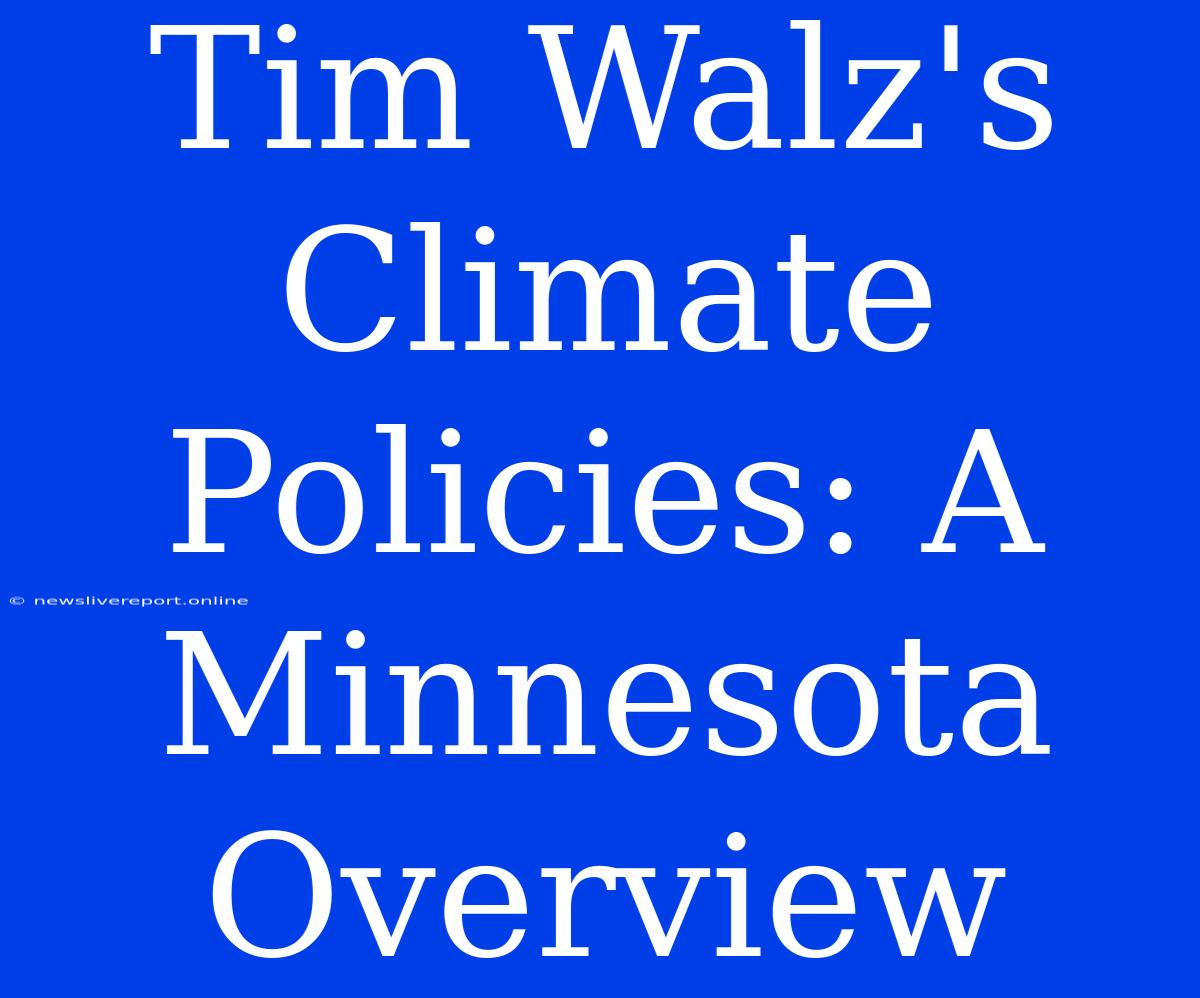Tim Walz's Climate Policies: A Minnesota Overview
Governor Tim Walz has made climate action a key priority during his time in office, implementing a series of policies aimed at reducing Minnesota's greenhouse gas emissions and transitioning to a cleaner energy future. These initiatives have garnered both praise and criticism, with supporters highlighting their ambitious goals and critics expressing concerns about their economic impact.
Here's a breakdown of some of the key policies implemented by the Walz administration:
Clean Energy Standard
One of the most significant initiatives is the Clean Energy Standard (CES), which requires Minnesota utilities to generate at least 55% of their electricity from renewable sources by 2035. This target is expected to drive investment in wind, solar, and other renewable energy projects, while also contributing to a cleaner energy grid.
However, concerns remain about the feasibility of achieving the goal, particularly given Minnesota's existing energy infrastructure and the potential impact on electricity costs.
Environmental Justice
The Walz administration has also emphasized the importance of environmental justice, recognizing the disproportionate impact of climate change on marginalized communities. This commitment is reflected in the Environmental Justice Strategy, which aims to ensure that all communities have access to clean air, water, and a healthy environment.
The strategy focuses on reducing pollution, promoting equitable access to green jobs, and investing in sustainable infrastructure in underserved areas.
Transportation Sector
Recognizing the transportation sector as a major source of greenhouse gas emissions, Governor Walz has introduced several initiatives to promote clean transportation. These include:
- Investing in electric vehicle charging infrastructure: This initiative aims to make it easier for Minnesotans to transition to electric vehicles by increasing the availability of charging stations.
- Promoting public transportation: The administration has supported funding for public transportation projects, emphasizing the importance of a robust and efficient transit system.
- Encouraging active transportation: Initiatives have been put in place to promote walking and biking, aiming to reduce reliance on cars.
While these initiatives are welcomed by advocates for clean transportation, some argue that more needs to be done to address the state's reliance on automobiles and encourage the adoption of electric vehicles.
Beyond Policy: Challenges and Opportunities
Despite the progress made under Governor Walz, significant challenges remain in addressing climate change in Minnesota.
- Public opinion: While there is widespread support for clean energy, concerns remain about the costs associated with transitioning to a clean energy economy.
- Economic impact: The transition to a clean energy future is expected to have a significant economic impact, requiring careful planning and investment to ensure a smooth transition.
- Federal government action: The effectiveness of Minnesota's climate policies is heavily dependent on federal government action, particularly regarding national climate targets and support for clean energy technologies.
Despite the challenges, Minnesota has the potential to become a leader in the clean energy transition.
The Walz administration's commitment to climate action provides a solid foundation for continued progress. By addressing the remaining challenges and capitalizing on opportunities, Minnesota can create a more sustainable and resilient future for its citizens.

